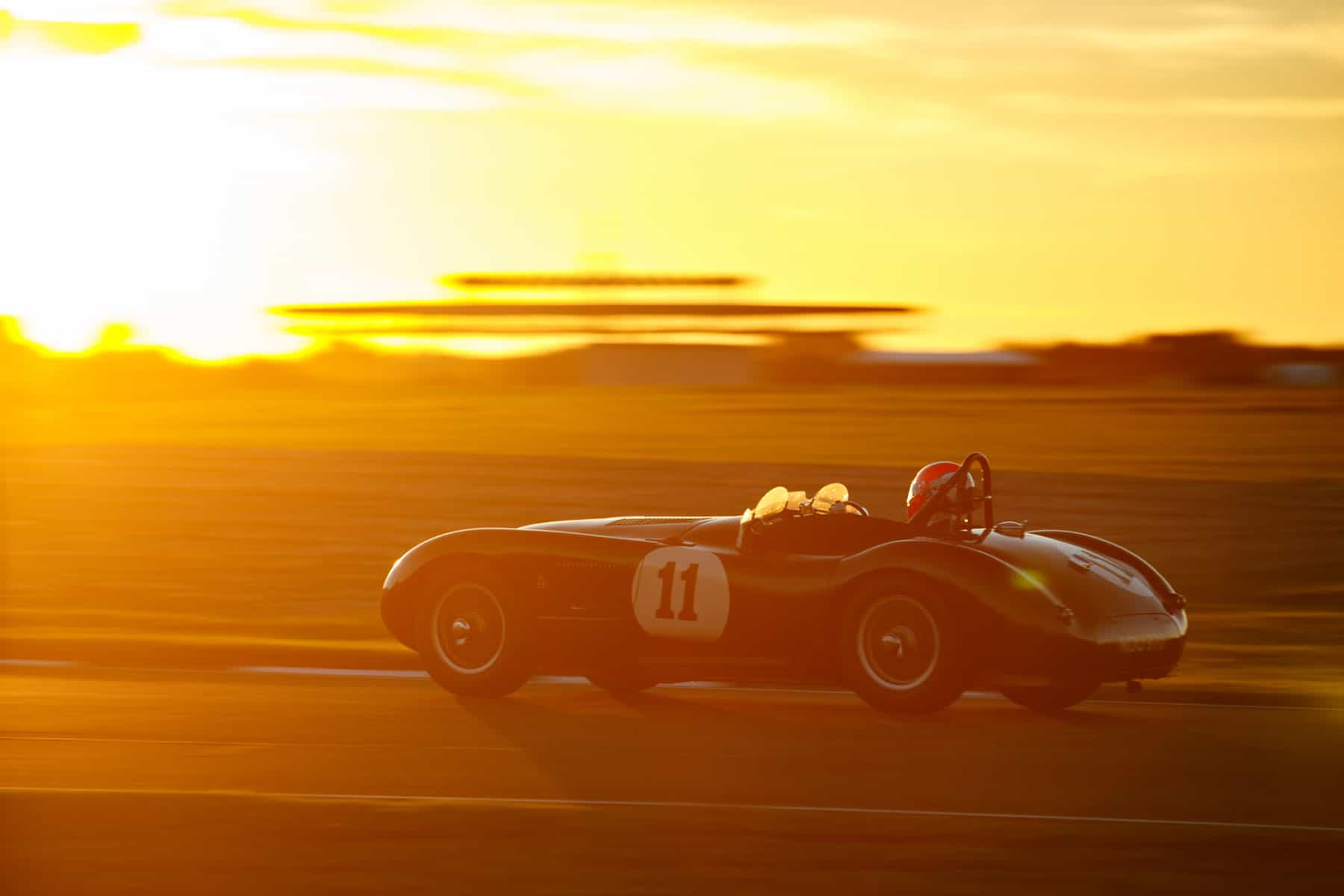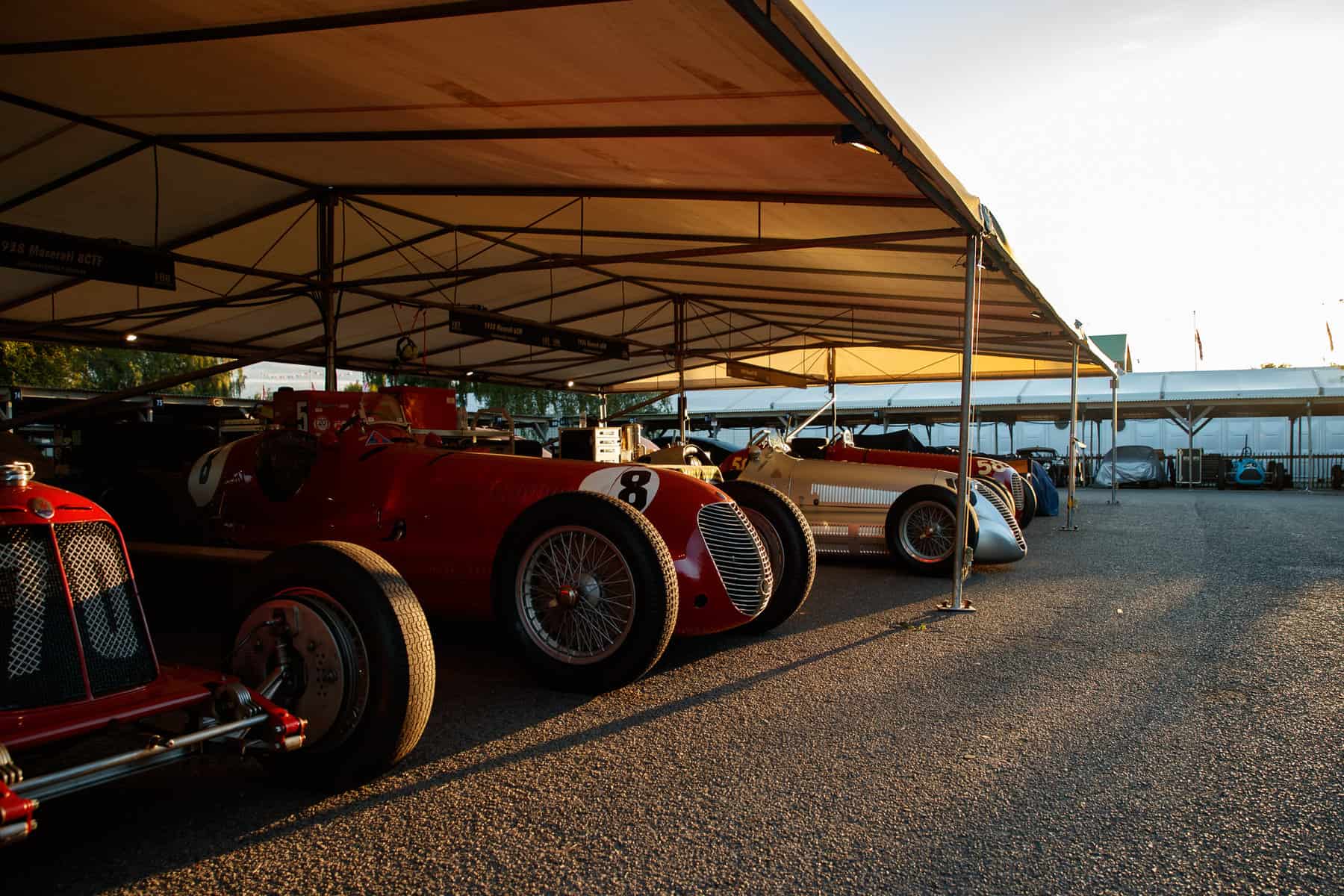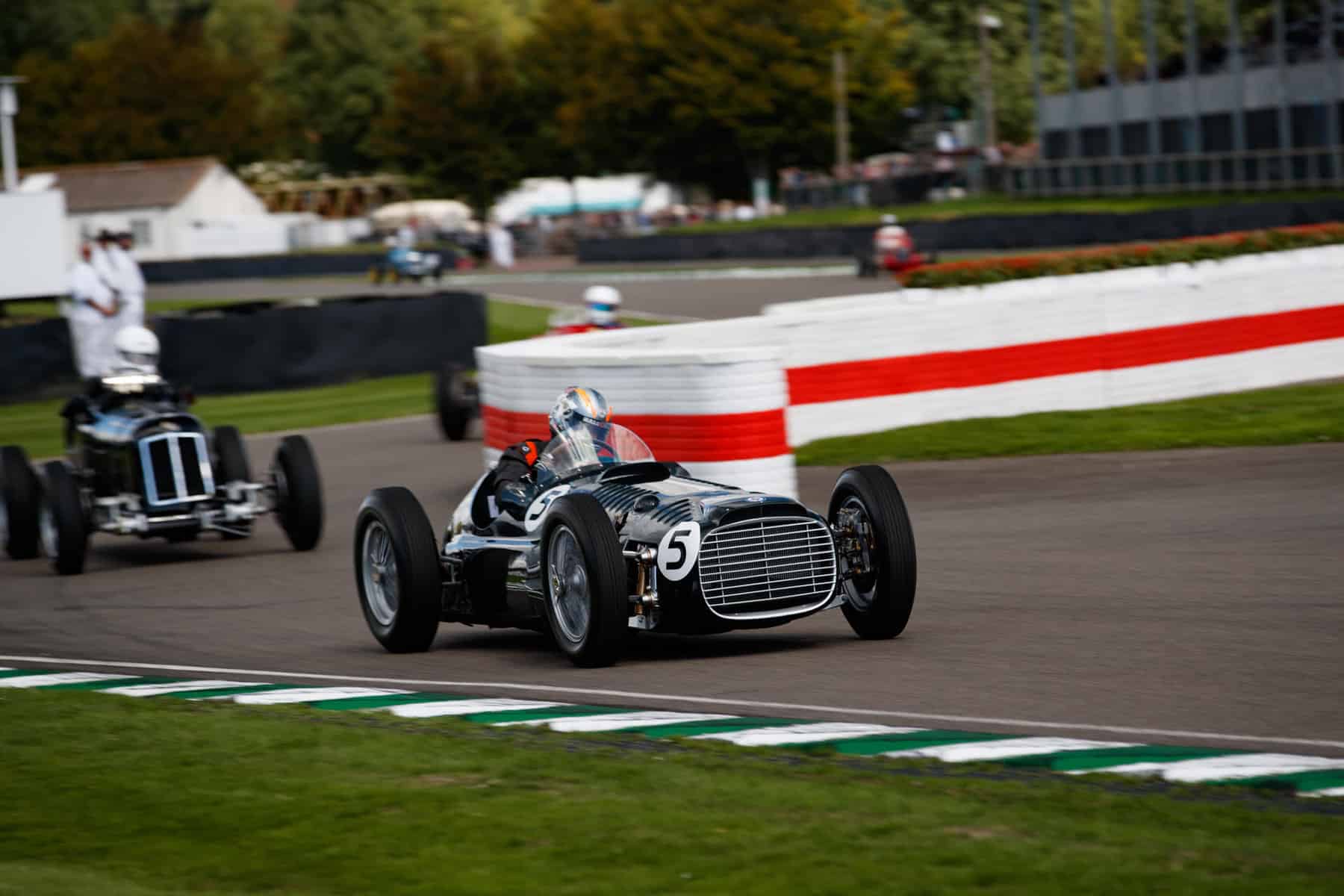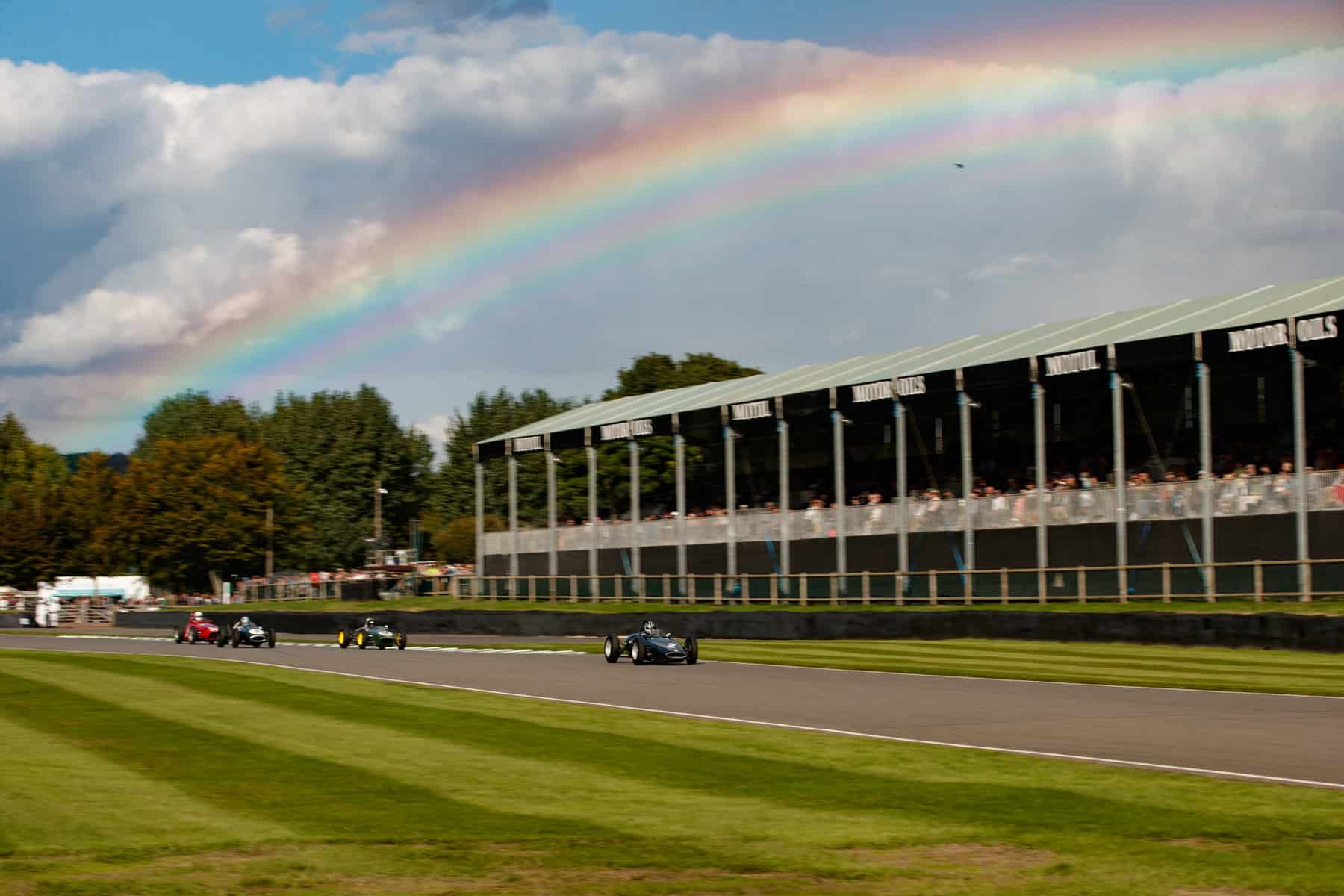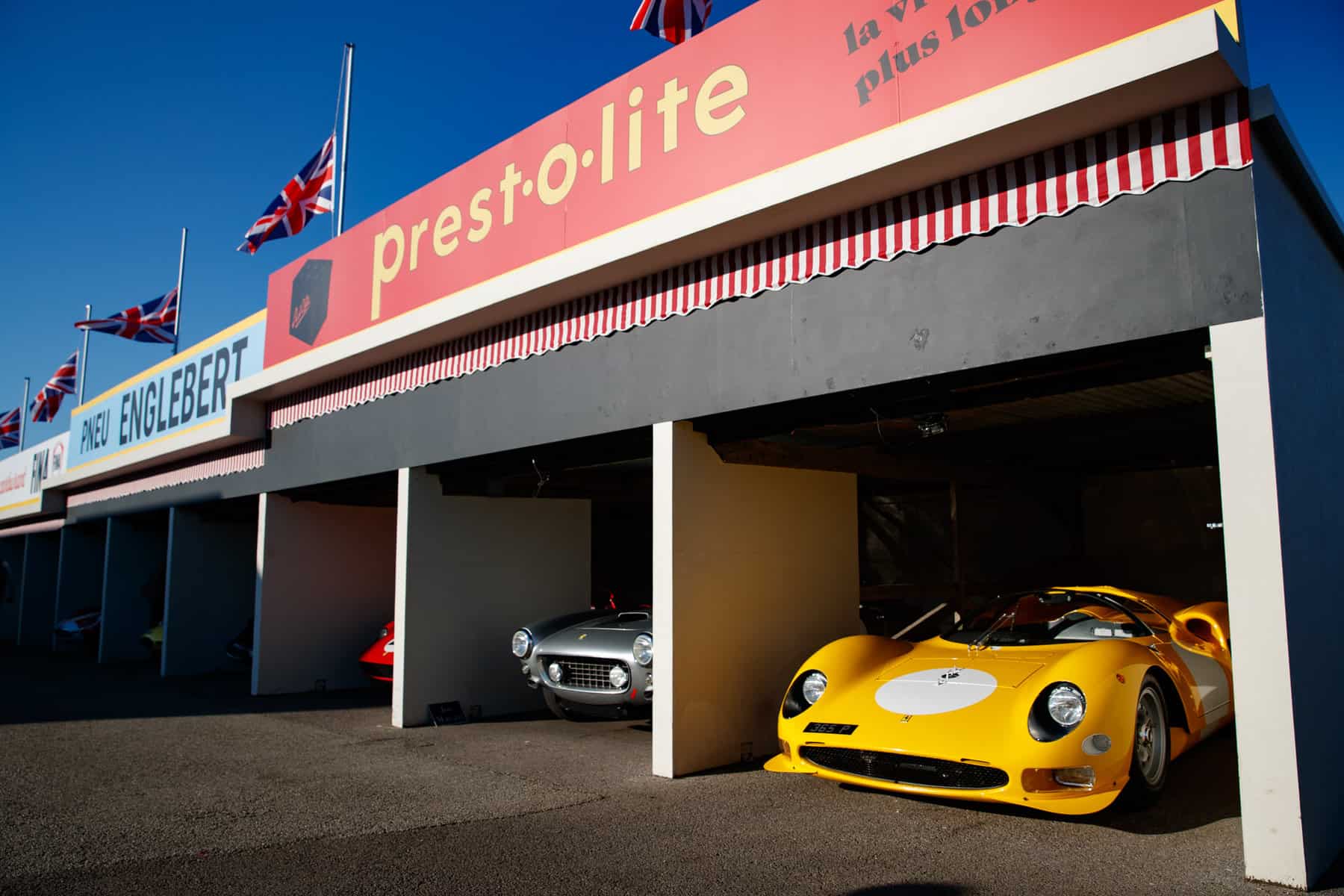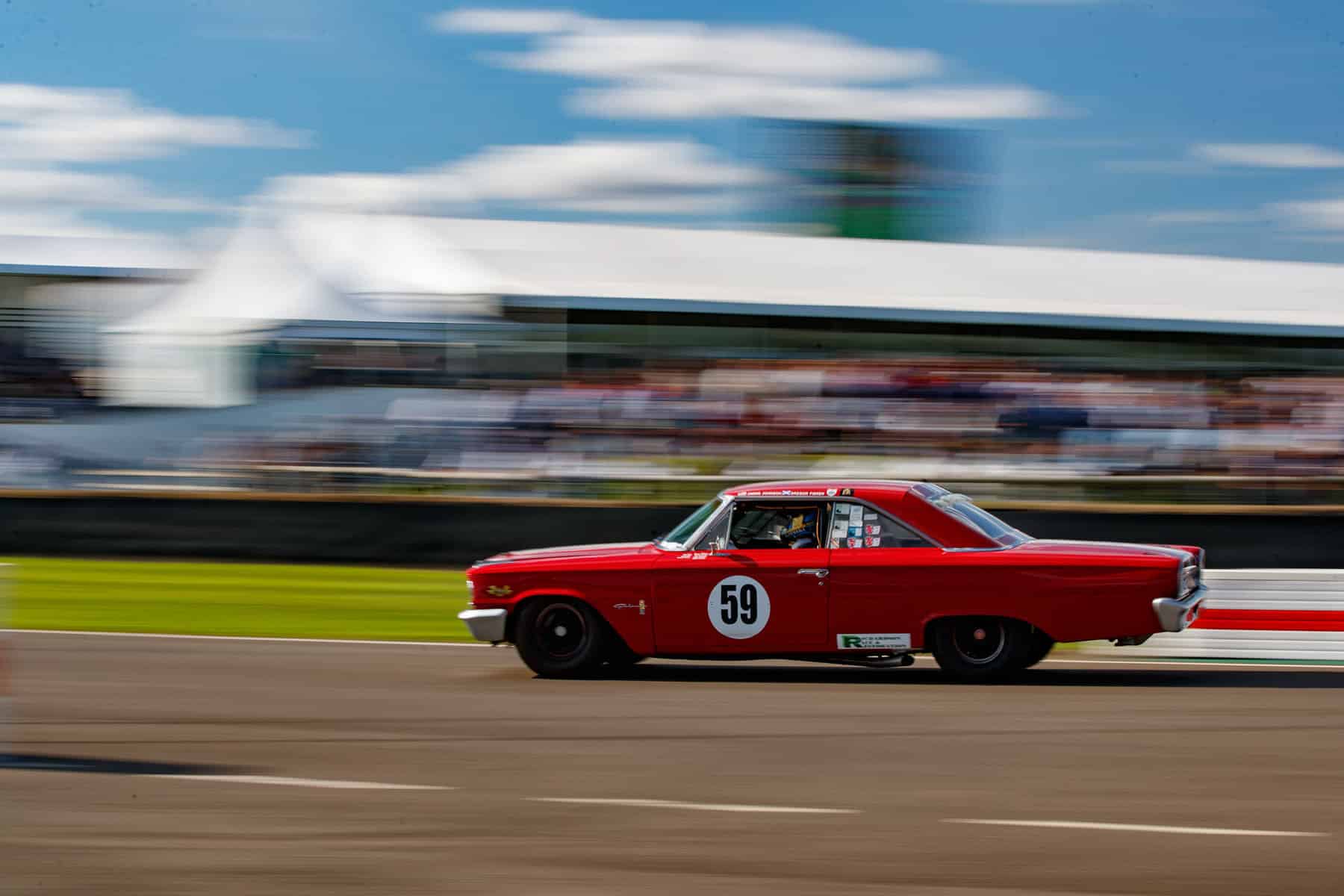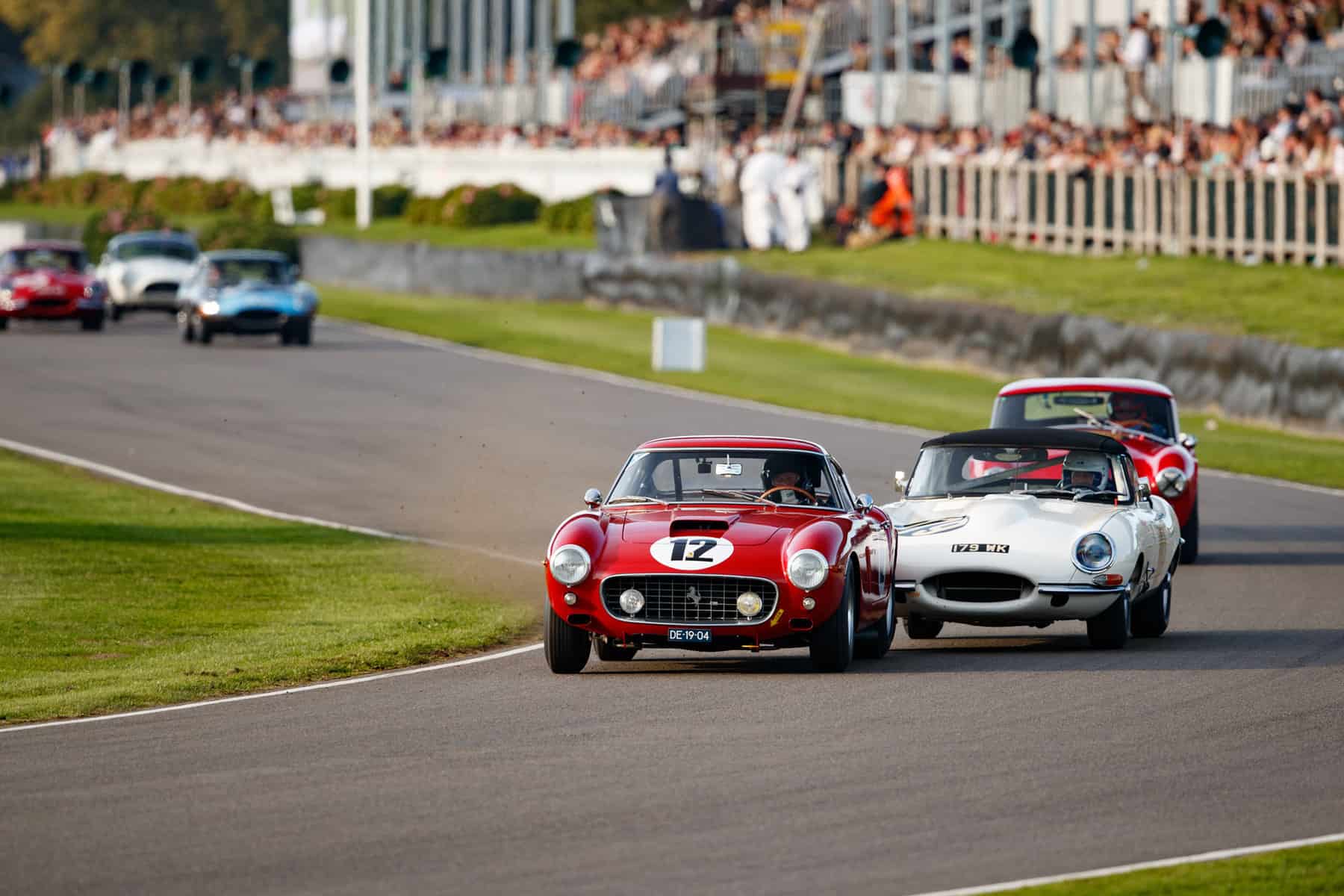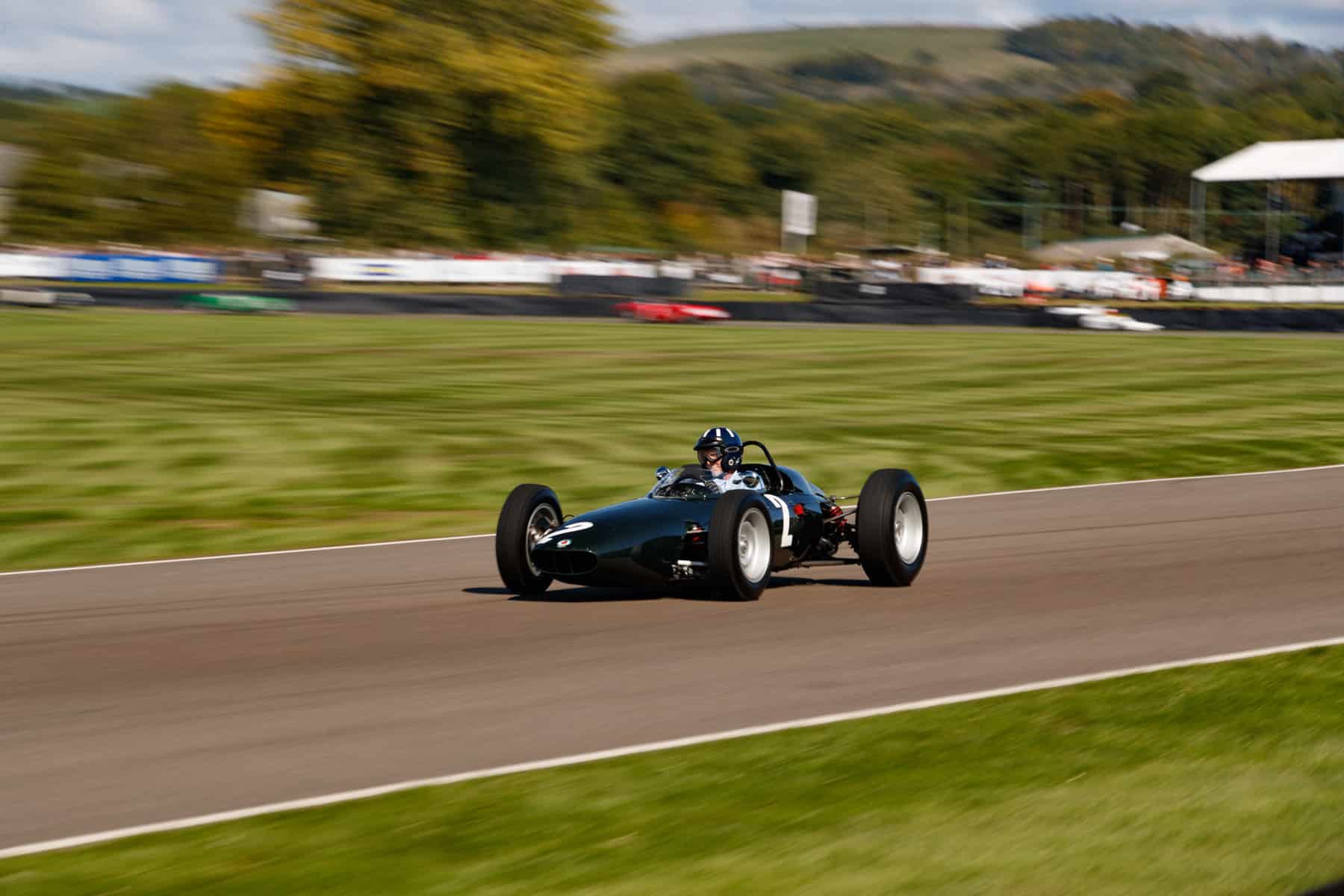2022 Goodwood Revival Meeting
Another classic gathering to remember
WORDS & IMAGES BY: WOUTER MELISSEN
Time traveling is a popular subject in science-fiction novels, TV shows, and movies. In fiction, the practice may require a police box with a surprisingly spacious interior, or a stainless-steel sports car equipped with a flux capacitor.
At the annual Goodwood Revival Meeting, however, none of that is needed – by simply walking through the gates of the Goodwood Motor Circuit, visitors can step back in time almost sixty years. Preserved just as it was when racing was originally suspended there in 1966, the facility forms a period set for the historic racing cars, participants, and the fortunate visitors who very much form part of the show by dressing for the occasion.
Racing resumed at Goodwood in 1998, which was fifty years after the Motor Circuit had first opened. Operational for just eighteen years, the track used the perimeter road of a World War II airfield on the vast Goodwood Estate. This is the family seat of the Duke of Richmond. Used mainly for national events, Goodwood did stage several non-championship Formula 1 races and several editions of the Tourist Trophy. Under the leadership of the eighth Duke of Richmond, it was used for competitive racing for just eighteen years but continued to serve as a test track for many years. Located on private property, the Motor Circuit did not succumb to redeveloping.
While the track was left untouched when the tenth Duke of Richmond looked at bringing motorsport back to Goodwood, it did not prove straightforward: “I had started the process of trying to get the track re-opened, but I came up against a brick wall in terms of getting Local Authority approval. This is why the Festival of Speed was organized first in 1993 and we had to wait until 1998 for the first Revival Meeting. Because of this we began to wonder whether there was somewhere else we could try out the idea, and the private road through the park seemed an obvious choice.” The circuit was restored, taking great care to preserve the original look and feel of the place.
A fashion photographer by trade, the Duke of Richmond’s vision was to create a time-warp event where the restored circuit formed the set for a 1960s costume drama. Although the request to the visitor to dress up may have raised a few eyebrows, from the first event most people did indeed make an effort, to such an extent that people in regular clothes actually stood out. Over the years, the theme has been expanded. Today there is a complete village with period shops and a supermarket. The venue’s origin as a World War II airfield is also celebrated with air displays and a concours d’elegance for classic aircraft.
While the jump back in time is interesting, it is the actual racing that quickly made the Goodwood Revival Meeting a must-visit event. Racing on a track that has been left untouched since the 1960s encouraged many owners to bring out their most precious historic racing cars and many (retired) professional racing drivers to give it a go. Especially in the early years, the first and foremost of these was the late Sir Stirling Moss. “Stirling was affectionately known as ‘Mr. Goodwood,’” the Duke of Richmond explains. “One of my greatest memories of him was racing the Belgian team D-Type in its glorious yellow color in the Sussex Trophy and overtaking Martin Brundle on the outside. Martin was giving it all he could, and Stirling just slid past him, waving as he went – it was a masterclass in car control.”
One of today’s masters of the Goodwood Motor Circuit is Sam Hancock. He says: “I love Goodwood because it feels very, very organic and very authentic in its layout. Because it is unchanged from the 1960s, it really suits the historic cars so much better than when we take historic cars to other circuits. There is a high-speed flow and rhythm to the circuit without any slow stupid hairpins and it is also not too wide. When you take a historic car to a modern F1 circuit, part of the problem is that the circuits are so smooth, so wide and a lot of corners are just quite easy, almost too easy for a historic racing car.”
“It is just lovely when you go to Goodwood; the circuit has some undulation, it goes up and down and it affects the way the car behaves through the middle of the corner. It is not a circuit where you are using curbs and even the chicane is quite fast. So it is just perfectly suited for historic cars and by far my favorite place to drive historic cars for sure.” Another major difference compared to a modern circuit is the lack of run-off area, as the circuit is surrounded by a bank: “I do not think too much about that. Obviously, I am completely aware of it but I quite like it. When you do not have the runoff, you do not take the same risks, but risk does not feel like a risk if there are runoffs. So the sense of satisfaction and reward is not the same on a modern circuit.”
Winning at the Goodwood Revival Meeting is so highly regarded that it warrants proper testing as Hancock explains: “It is an event that is taken seriously enough to justify some reasonably focused testing days and some very focused driver coaching days. I love that, it is just fantastic, and it is a really rewarding and enjoyable part of my job.” Hancock also helps to make the cars go faster: “I love developing the setups of the cars. I love being able to give the owner, the gentleman driver, effectively free lap time just from some small simple setup adjustments. I love being able to give them much more confidence in their car and more pleasure from driving their car with simple setup adjustments.”
Spread over the weekend there are thirteen races for sports cars and single seaters up to 1966 as well as two races for motorcycles. Often the most spectacular are the races for two drivers, usually the owner and a professional. Three of these are an hour long and have a mandatory pit-stop for the driver change. For the fourth grid, consisting of touring cars, there two separate twenty-five-minute races with the final result being based an aggregate of the two. Among the long list of famous drivers taking part this year were Jenson Button, Dario Franchitti, Scott Dixon, Jimmie Johnson, Emanuele Pirro, and Tom Kristensen.
The first of the two-driver, one-hour endurance races was the Freddie March Memorial Trophy at sunset on Friday evening. This was run for sports cars of a type that ran in the Goodwood Nine-Hour races held between 1952 and 1955. Sharing with owner Fred Wakeman, Hancock raced a Jaguar C-Type in this race. “Fred started the race and he really won it for us. When you have a two-driver race and you have a pro-am driver pairing, which obviously many people do, the pros tend to be fairly equal across the different drivers, but the gentleman driver really makes a difference.”
He goes on. “One problem with the C-Type is that it does suffer brake-fade because of the drums. That happens quite quickly at a circuit like Goodwood because of the high speed and therefore heavy braking forces. The main challenge for me actually was just looking after the brakes enough to get to the checkered flag. I found that I could push for about half of my stint, which was great because it was enough to catch the guys ahead to get into the lead.” When Hancock crossed the line to claim a hard-fought victory, he was over eight seconds ahead of another C-Type, one fitted with disc brakes.
Running into the sunset traditionally makes this one of the most beautiful races of the weekend but also makes life a little complicated for the driver. “You have one or two laps where on the exit of Madgwick corner you are driving into a very powerful blinding sunset when you head up towards Fordwater, but it’s not a big problem.” Hancock continues: “It is all part of the atmosphere and the character of a race taking place at that time of day. It is typical of Goodwood and the English countryside where you are looking across beautiful green fields and green trees to a gorgeous orange sunset.”
Concluding proceedings on Saturday was the two-driver Stirling Moss Memorial Trophy. This one-hour race was for closed-cockpit GT cars built before 1963 and featured several Ferrari 250 GT SWBs, Aston Martin DB4 GTs, Jaguar E-Types, and early Shelby Cobras. A relatively new addition to the Goodwood roster, this has become a particularly popular race and featured an E-Type shared by former Ganassi teammates Dario Franchitti and Scott Dixon, who were classified sixth after a pit-lane speeding penalty. Due to a lengthy safety car period, the race was difficult to follow but it was certainly impossible to miss the Shelby Cobra “Dragonsnake” shared by Mike Whitaker and Andrew Jordan. Starting from pole position, the metallic purple “260” Cobra scored a well-deserved win.
The traditional blue-ribbon race of the weekend is the RAC TT Celebration for mid-1960s GT cars. This field also consisted of Cobras and E-Types but of a later specification. A pre-race favorite was the Adrian Newey–owned E-Type Lightweight shared by Newey’s son Harrison and Jenson Button, which has reportedly spent time in the Red Bull windtunnel. Button got off to a great start and with several physics-defying laps opened up a twenty-five-second lead. Sadly, shortly after Newey had taken over, the E-Type gearbox failed and he was to retire. This left a colorful mix of machinery to fight for the victory with the likes of Tom Kristensen, Jimmy Johnson, and Marino Franchitti all coming up short to former BTCC champion Gordon Shedden, who grabbed a popular victory in the Cobra he shared with Andrew Smith.
In addition to the racing, there were also several on-track parades celebrating milestone anniversaries. These included the seventy-fifth birthday of Ferrari, which brought out a great collection of GT cars, sports racers, and single seaters. It has also been sixty years since Graham Hill won the Formula 1 World Championship with BRM and, to mark the occasion, a great selection of cars he raced was brought out. The parade was headed by Hill’s son Damon in the very BRM P578 used to win the World Championship in 1962. Known as “Old Faithful,” the car was brought over especially from the United States where it resides in Revs Institute in Naples, Florida. The largest parade was for the centenary of the Austin Seven – the original plan called for a gathering of one hundred examples of the car, but the final number was closer to two hundred!
Held during the period of mourning after the passing of Her Majesty Queen Elizabeth II, the 2022 Goodwood Revival Meeting managed to capture the right tone. Each day there was a very touching moment of reflection, which included one minute of silence. For drivers and visitors alike, it was another Revival Meeting to remember, so much so that Goodwood “rookies,” racing legends Jimmie Johnson and Scott Dixon, promised to be back for more in 2023.
